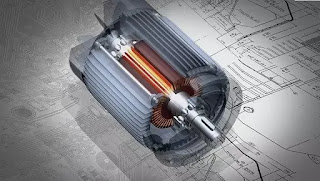Types of charging stations for Electric vehicles and Tesla super chargers.
BY AFZAL YOUSAF
Not all the electric vehicles are charged in the same manner as the charging system varies depending on the Time of charging, Type of battery, Cell c-rate, Type of vehicle etc. Obviously before owning an EV, so many doubts will be there in customer's mind about charging. In this article, you can find out the different types of charging stations and choose wisely according to your EV.
Most of the EV customers would like to charge their vehicle in home itself. Charging an EV is a simple process by just plugging your vehicle to charger connected to the grid. But in contrast, all the chargers cannot connect to household grid as it needs some custom installation. Also the time taken to charge completely depends on the type of charger we use.
Considering all the above factors and, EV chargers are differentiated into three main categories as standard:-
- LEVEL 1 TYPE
- LEVEL 2 TYPE
- LEVEL 3 TYPE(DC FAST CHARGING)
AC Type charging mostly support slow and moderate charging while fast charging is done using DC. So level 1 and 2 works in AC and level 3 is DC. Tesla supercharger is a type of DC Charger and there is also chargers with the combination of AC & DC. Details are given below:-
Level 1
Level 1 chargers are 120 V AC plugs which can be connected to normal household outlet. It does not requires a custom outlet and is a slow charging process which almost takes 8-10 hour to complete. Usually it is preferred by EV Owners who likes to charge their vehicle overnight. And is the least expensive chargers in EVSE(Electric vehicle supply equipment).
Maximum power output is up to 7.2 kW, 32 Amps, Single phase.
Level 2
Level 2 chargers are up to 240 V AC and also uses 204 V AC. Used in both residential and commercial charging stations. Residential chargers uses 240 V AC plug, while commercial chargers use 204 V AC plugging. It cannot be connected to standard outlet as it needs custom outlet installations. This chargers are moderately fast, so charges the vehicle completely within 2-4 hours. This chargers are ideal type to offer optional fast charging feature to customers.
Maximum power output is up to 44 kW, 63 Amps, 3 Phase. Also uses 22 kW, 32 Amps in 3 Phase.
Level 3
Level 3 chargers, also known as DC Chargers or CHAdeMO Chargers are fast charging, which can charge the EV less than 1 hour, may be within 20 minutes. It is up to 1000 V DC and uses CAN(Controlled area network) communication between EV and EVSE and requires high power and highly equipped machine installation to work and maintain. This is only used for commercial and industrial purposes and very costly compared to Level 1 & Level 2.
Maximum power output is up to 400 kW DC, 400 Amps. Cars like Mitsubishi I, Nissan Leaf uses DC Fast chargers.
Combined Chargers(AC and DC)
Combined charging system(CCS) uses both AC and DC for charging in same plug. There are two versions:-
- CCS 1
- CCS 2
Uses up to 43 kW AC and 400kW DC. It uses a power of 1000 V * 400 Amp.Communication between EV and EVSE is using PLC(Power line communication). Cars like Audi, BMW, Daimler, Ford uses CC system.
Tesla Super charger
Tesla super chargers are the special chargers developed by Tesla itself that charges Tesla battery within 30 minutes. The development of "superchargers" has become one of the big selling points of Tesla cars. These chargers are designed exclusively for Tesla, and incompatible for other company models. It is around 135 kW DC Charging with a power of 400 V*330 Amp. Tesla super chargers use CAN Communication between EV and EVSE.
Comment your queries and ideas about the Topic. Keep Reading.








💓
ReplyDeleteThank you.Keep reading. Keep supporting.
DeleteThank you. Keep reading and support us.
ReplyDelete